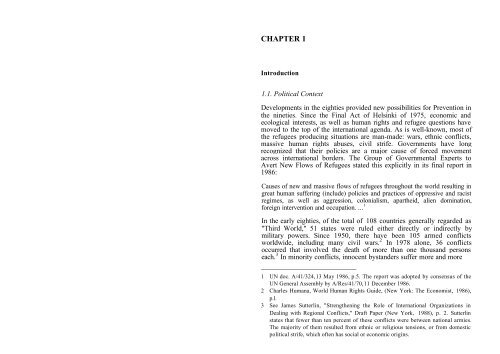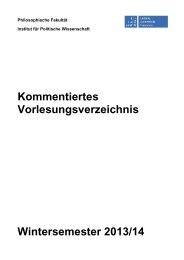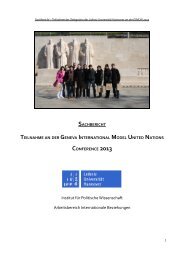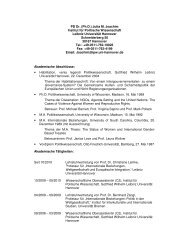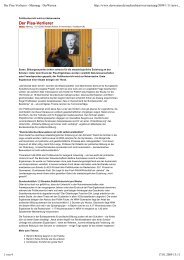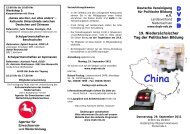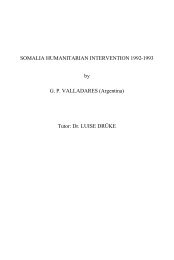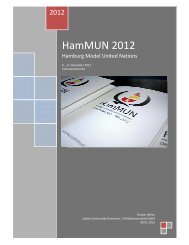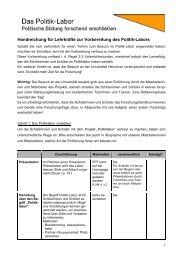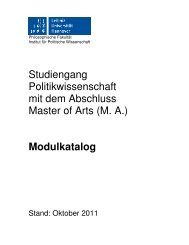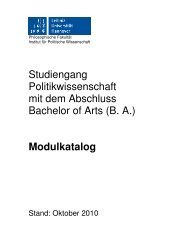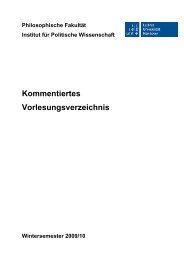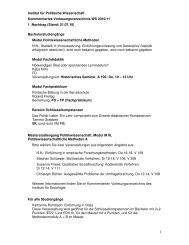Preventive Action for Refugee Producing Situations
Preventive Action for Refugee Producing Situations
Preventive Action for Refugee Producing Situations
You also want an ePaper? Increase the reach of your titles
YUMPU automatically turns print PDFs into web optimized ePapers that Google loves.
CHAPTER 1<br />
Introduction<br />
1.1. Political Context<br />
Developments in the eighties provided new possibilities <strong>for</strong> Prevention in<br />
the nineties. Since the Final Act of Helsinki of 1975, economic and<br />
ecological interests, as well as human rights and refugee questions have<br />
moved to the top of the international agenda. As is well-known, most of<br />
the refugees producing situations are man-made: wars, ethnic conflicts,<br />
massive human rights abuses, civil strife. Governments have long<br />
recognized that their policies are a major cause of <strong>for</strong>ced movement<br />
across international borders. The Group of Governmental Experts to<br />
Avert New Flows of <strong>Refugee</strong>s stated this explicitly in its final report in<br />
1986:<br />
Causes of new and massive flows of refugees throughout the world resulting in<br />
great human suffering (include) policies and practices of oppressive and racist<br />
regimes, as well as aggression, colonialism, apartheid, alien domination,<br />
<strong>for</strong>eign intervention and occupation. ... 1<br />
In the early eighties, of the total of 108 countries generally regarded as<br />
"Third World," 51 states were ruled either directly or indirectly by<br />
military powers. Since 1950, there have been 105 armed conflicts<br />
worldwide, including many civil wars. 2 In 1978 alone, 36 conflicts<br />
occurred that involved the death of more than one thousand persons<br />
each. 3 In minority conflicts, innocent bystanders suffer more and more<br />
_____________________________<br />
1 UN doc. A/41/324,13 May 1986, p.5. The report was adopted by consensus of the<br />
UN General Assembly by A/Res/41/70,11 December 1986.<br />
2 Charles Humana, World Human Rights Guide, (New York: The Economist, 1986),<br />
p.l.<br />
3 See James Sutterlin, "Strengthening the Role of International Organizations in<br />
Dealing with Regional Conflicts," Draft Paper (New York, 1988), p. 2. Sutterlin<br />
states that fewer than ten percent of these conflicts were between national armies.<br />
The majority of them resulted from ethnic or religious tensions, or from domestic<br />
political strife, which often has social or economic origins.


